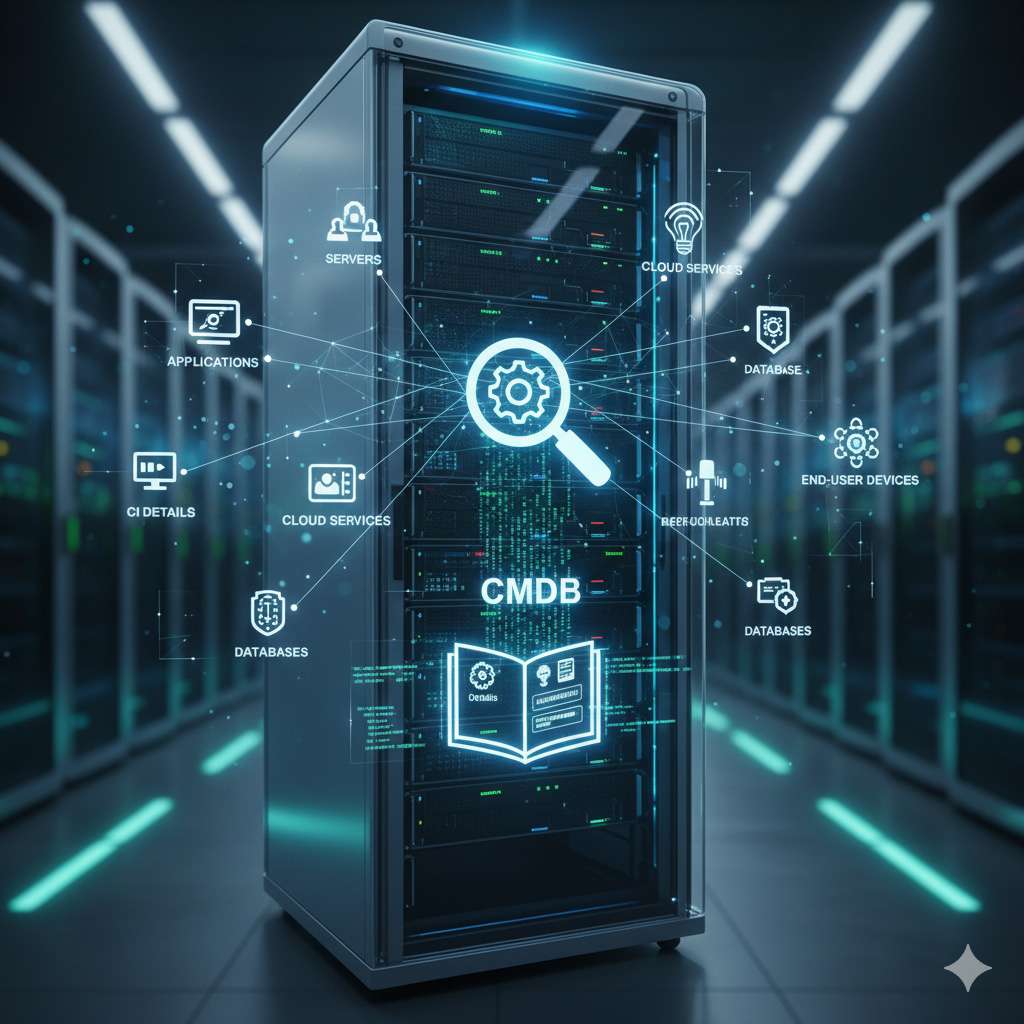How Does CMDB Discovery Work? What Are Its Methods?
A CMDB (Configuration Management Database) is a centralized database that stores all assets (Configuration Items/CI) in an IT environment, their attributes, and relationships. For example, servers, applications, databases, network devices, cloud services, workstations, and even business processes are included in the CMDB. The purpose of a CMDB is to make the entire IT infrastructure visible and manageable from a single source. CMDB discovery refers to the collection of methods used to keep the CMDB reliable and up-to-date. The goal of CMDB discovery is to automatically detect all assets (CIs), their characteristics, and their relationships within the IT infrastructure, and transfer this information accurately and completely to the CMDB. This way, the CMDB becomes not just a static inventory, but a trusted “single source of truth” for incident management, root cause analysis, change management, and compliance processes.

The Relationship Between CI and CMDB
A CI (Configuration Item) is the smallest building block registered in the CMDB. These include:
- Physical assets → server, switch, laptop, printer
- Software → applications, services, operating systems
- Documentation → SLAs, process definitions
- Virtual/Cloud assets → VM, containers, AWS EC2 instances
- Relationships → dependencies like “This application runs on that server”
Each CI has unique attributes such as hostname, IP address, serial number, version information. Accurate CI identification is critical for proper infrastructure monitoring and management. It makes visible which hardware, software, service, or process exists in the environment, reveals their dependencies, and accelerates incident and change management. Up-to-date CI information also serves as a reliable source for compliance and audit processes. In short, if CIs are not accurate and current, the CMDB becomes unreliable, directly impacting the accuracy, speed, and security of IT operations.
As IT infrastructure complexity grows, accurately identifying every asset (CI) and recording it in the CMDB becomes critical. CI discovery includes finding these assets automatically or manually, normalizing data, and fully adding them to the CMDB. Revealing the relationships between CIs helps understand how the infrastructure works and makes incident and change management more effective.
- Using technical methods like ping scanning, SNMP, WMI, API, log analysis, agents, etc.
- For example, data about the same device from different sources is merged, duplicate records removed.
- If the record exists → update it.
- If not → create a new CI.
- For example, “Application A runs on Server B and connects to Switch C.”
In short:
- CMDB = database (container)
- CI = individual items inside
- CI discovered → added to CMDB → relationships established → accurate and current inventory formed.
The Most Common Methods Used for CMDB Discovery
1. Agent-Based Discovery
- A small software agent is installed on each device.
- The agent regularly collects hardware, software, and configuration data and sends it to the CMDB.
- Advantages: Collects very detailed information (CPU, RAM, installed software, patch levels).
- Disadvantages: Agent installation and updates add operational overhead.
2. Agentless Discovery
- Connects to devices via network protocols (SNMP, WMI, SSH, etc.) to gather information.
- Advantages: No need to install extra software.
- Disadvantages: Requires access permissions and network configuration, and some detailed data may be missing.
3. Network Scanning
- IP ranges are scanned to find active devices.
- Basic info is gathered depending on device type (switch, server, IoT device, printer, etc.).
- Advantages: Easier detection of unseen devices.
- Disadvantages: Provides only basic info, requires complementary methods for details.
4. Log and Event-Based Discovery
- New devices/services are detected through system logs, security events, or application logs.
- Example: A server is registered in the CMDB when it generates logs for the first time.
5. API/Integration-Based Discovery
- Data is pulled via APIs from existing systems (Intune, Lansweeper, SolarWinds, VMware, cloud providers, etc.).
- Advantages: No need to rediscover data already collected in source systems.
- Disadvantages: Depends on the accuracy of the source system data.
6. Passive Discovery
- Network traffic is monitored to see how devices present themselves (e.g., DHCP logs, ARP tables, NetFlow).
- Used particularly for IoT devices or hidden assets.
7. Manual Discovery
- Assets are recorded manually by IT teams.
- Advantages: Includes special assets that automation cannot catch.
- Disadvantages: Most error-prone and unsustainable method.
8. Dependency Mapping
- Not only identifies assets but also uncovers their relationships.
- Example: Application A → Server B → Switch C → Firewall D.
- This greatly speeds up root cause analysis in incident management.
ODYA Automated NOC’s Contribution to the CMDB!
ODYA Automated NOC continuously monitors device operational status, performance metrics, and connections. This information is sent to the CMDB, so it shows not only “what exists” but also “what is happening now.”
ODYA Automated NOC detects new devices using network scans, SNMP pollers, or autodiscovery features. These new devices are automatically added to the CMDB, enabling automatic CMDB discovery.
When CI attributes change (IP changes, hostname updates, firmware upgrades, etc.), monitoring data updates the CMDB records, eliminating the need for manual updates.
Monitoring tools generally perform topology discovery to create service trees showing connections like which server connects to which switch, which application calls which service. This dependency information is transferred to the CMDB, enabling faster root cause analysis.
CMDB data tends to become outdated over time. ODYA Automated NOC regularly checks whether devices really exist, are working, and if the data is current, ensuring CMDB accuracy and consistency.
In summary:
- CMDB stores “what we have.”
- Monitoring provides “what is happening now.”
Thanks to integration with ODYA Automated NOC, the CMDB becomes a live and reliable source, not just a static inventory. Need help with CMDB Discovery? Contact us!
Fill the Form, We’ll Reach Out!


